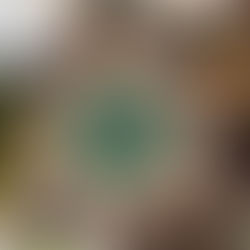What Rune Does Gandalf Put on Bilbo Baggins’ Door in the Hobbit Movie? Delving Deeper in the Use of Runes in Cinematography
- Veronika
- Jun 26, 2024
- 2 min read
Updated: Jul 22, 2024

The other day, while rewatching the Hobbit movies, I had a real sense of admiration for the use of Runes in Tolkien’s world. In particular, I always found the use of Fehu Rune to be a wise choice given the quest of the dwarves.
Tolkien was inspired by Norse symbols, as well as mythology in the creation of Middle Earth. And the choice of this Rune proves that he did not just use the information mindlessly, he really delved deep into the sources he used and so will we today.
But before I give you my take on the reasons Fehu was the Rune of choice to be inscribed on Bilbo’s door, let’s see what Tolkien himself says about it.

So, what did Gandalf write on Bilbo’s Door according to Tolkien?
J.R.R. Tolkien does explain the rune on Bilbo Baggins' door in his works. In "The Hobbit," Gandalf marks Bilbo's door with a secret rune that signifies to the dwarves that this is the house of their chosen burglar. In Chapter 1, titled "An Unexpected Party," Tolkien describes this rune as a sign that includes a strange symbol Gandalf scratched on the door. The rune is actually a combination of several marks, which is interpreted by the dwarves to mean that Bilbo is a burglar looking for work and that he will provide food and lodging.
Tolkien goes into further detail in his writings about runes in "The Hobbit" and "The Lord of the Rings," especially in the appendices. The runes used in Middle-earth, particularly those of the Dwarves, are often based on the real-world runic alphabets, such as the Anglo-Saxon and Norse runes. And this is what I think of this choice.
Fehu is the Rune that represents abundance, wealth and success in “financial” endeavors. The modern meaning of Fehu is prosperity, money, and property. It is the Rune of creation & destruction, energy and fertility. It is the true Rune of abundance through EFFORT and perseverance. It will not tolerate lazy and reckless behavior, as well as greed (something dwarves really struggle with).
The choice of this Rune was not accidental. The dwarves were on a task to reclaim their homeland (property) and their wealth. To get what they owed back they had to go through many perils and struggles. But what is more important is that to maintain and keep their wealth, Thorin would have to fight his biggest internal enemy - greed. The greed that his grandfather succumbed to, which destroyed Erebor, is the shadow side of Fehu. The dragon is also the shadow side of Fehu, it is the energy of destruction that greed causes.
The Moral Lesson
Ultimately, the story serves as a cautionary tale about the dangers of greed. While wealth and prosperity (Fehu) can lead to growth and abundance, they also come with the risk of moral corruption and destruction if not handled wisely. Thorin’s eventual realization of his folly and his redemption, though tragic, highlight the necessity of balancing material wealth with ethical integrity.









تعليقات